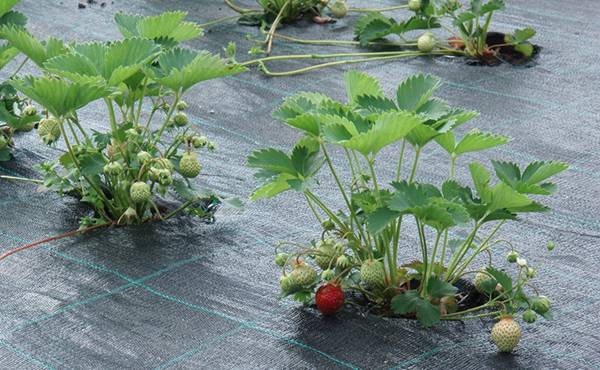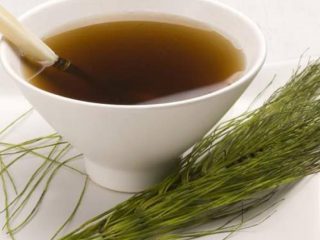Content
Those strawberry lovers who choose a new variety to plant in their garden beds should pay attention to the Kama variety. It has many wonderful qualities that are valued in this culture. In this article you can read a description of the Kama strawberry variety, about its characteristics, advantages and disadvantages, reviews from gardeners about it and see in the photo what it looks like.
Description
Strawberry Kama is a variety of Polish selection. The parent forms for it were well-known varieties Zenga Zengana and Cavalier. As a result of this crossing, plants were obtained capable of producing berries with the following qualities:
- sweetness and rich aroma;
- suitability for transportation;
- versatility of use (fresh and canned).
This quality allows it to be transported, for example, for sale, which is valuable for those gardeners who grow berries for sale. If it is planted for actual consumption, then it is better to wait until the strawberries are completely ripe.
Description of strawberry variety Kama and its photo:
- the bush is low, compact;
- the root system is powerful;
- the leaf is dark green, pubescent on the underside;
- peduncle drooping, powerful, below the level of leaves;
- berries are classically cone-shaped and rounded-diamond-shaped with a noticeable neck, slightly ribbed, shiny;
- strawberries of medium size and weight (20-30 g), the first berries can be much larger;
- color – from bright red to dark red, burgundy;
- the pulp is sweet, quite dense;
- pronounced strawberry aroma;
- the seeds are yellow in color and sit shallow;
- There are few mustaches, but they are large.
The bushes of this variety begin to bloom early, the fruiting period takes 4-5 weeks (late May - early June). The yield is decent and amounts to up to 1 kg per bush. True, it has been noticed that after the first wave of large berries, the next ones become somewhat smaller. The purpose of the berries is for fresh eating, processing into juice and dessert preparations, for canning and freezing.
Advantages and disadvantages
Strawberries of the Kama variety have their own positive and negative qualities, which those gardeners who want to plant them in their beds need to know about. Among the advantages of this variety are:
- early ripening of berries (in May-early June);
- long fruiting period;
- drought resistance provided that the beds are mulched;
- a small number of mustaches;
- large berry of harmonious shape;
- concentrated strawberry flavor and aroma;
- excellent yield.
But the particular popularity of Kama variety strawberries is associated not only with its high yield, but also with the fact that it can be grown not only in ordinary beds, but also in a greenhouse, and accordingly get an extra-early harvest.
For example, in greenhouse conditions, berries from strawberry bushes can be collected as early as mid-April. This quality is worth paying attention to those gardeners who are focused on growing crops for the purpose of selling berries. This choice is also supported by the fact that in Europe Kama strawberries are grown on an industrial scale. And another advantage of the variety is remontability: strawberry bushes are able to bear fruit 1 or 2 more times per season.
Disadvantages of the variety:
- spreading bush, overdeveloped leaf mass;
- plants require a large feeding area;
- peduncles are located below the leaves;
- not resistant to white and brown spots;
- requires covering the bushes with agrofibre when there is a threat of spring frosts (flowers cannot tolerate temperatures dropping below 0°C).
All this must be taken into account when planting and caring for Kama strawberries, so that the features characteristic of it do not come as a surprise to the gardener.
Landing
According to reviews from practicing gardeners, the most difficult moment in growing Kama variety strawberries is to wait until they are fully ripe and acquire a rich taste and aroma, and not to pick them ahead of time. Otherwise, many speak of this variety as non-capricious and problem-free. According to them, the Kama variety requires the same care as other unpretentious varieties of strawberries. Therefore, it is quite popular and it is not difficult to get seedlings; the main thing is to purchase them from trusted producers - in this case there is a guarantee that they will be varietal.
For strawberries, choose a place in the garden that is well lit by the sun; it is not advisable to plant plants in the shade. Another condition is that the predecessors must be any cruciferous, legumes and green crops, onions, garlic.It is possible to plant strawberries over tomatoes and cucumbers, but it is not advisable. And you shouldn’t plant it at all after large plants that greatly deplete the soil - sunflower and Jerusalem artichoke.
The soil on the future strawberry plantation should be light, nutritious, loose, breathable and moisture-absorbing, slightly acidic. Before planting seedlings, you need to dig them up, add fertilizers (humus, ash) and mix them with the soil.
On the day of planting, the roots of the seedlings need to be dipped in a 1% solution of potassium permanganate for disinfection, and then planted in the holes. Planting pattern: 40-50 cm in a row and 60-80 cm in row spacing. It is not recommended to plant thicker so that strawberries show their full potential; they need just such a feeding area.
Care
Young bushes need to be watered every day or every other day while rooting takes place. Once the strawberries have taken root, you need to water less often. However, strawberries of the Kama variety are quite drought-resistant and with regular watering and mulch in the beds, adult bushes do not burn out even in extreme heat. If there is no mulch, then you will have to water frequently, and after each watering, the soil will need to be loosened to prevent crust formation.
Plants of the Kama variety are large and powerful, so they cannot do without fertilizing. As fertilizers, you need to use humus and wood ash as a source of potassium, which plants need for fruiting, or ready-made complex fertilizers. The first fertilizing should be done before flowering. Fertilizer application must be combined with watering. Also, before flowering begins, it is necessary to carry out preventive treatment with insecticides against weevils and strawberry mites, as well as fungicides against spotting.
Kama strawberries should be harvested as the berries ripen.As already mentioned, their dark red color does not mean that they are fully ripe, so it is better to wait a couple of days and only then pick the harvest. Since Kama’s flower stalks are drooping, to prevent the berries from rotting, you need to put planks, pieces of slate and similar material under them. If there are slugs and grape snails on the site that are not averse to spoiling the berries, you can sprinkle pine needles around the bushes to combat them.
For the winter, Kama strawberry bushes need to be covered with hay, straw, leaves falling from trees, spruce branches or synthetic covering material. In the spring, as soon as it gets warm enough, it must be removed.
Reproduction
Old, fruit-bearing strawberries should be replaced with new ones no later than after 4-5 years. Keeping it longer is unprofitable - the berries become very small, their number decreases, and the yield drops sharply. For breeding, you can take mustaches from your bushes. The mother plants should be young, 1-year-old or, in extreme cases, 2-year-old, the mustaches should be the largest. Strawberries can be returned to their old place after 3-4 years.
Reviews and videos
Conclusion
Kama strawberries have deservedly won the love of Russian gardeners thanks to their sweet taste and strong, persistent aroma. If this wonderful berry does not yet grow on your site, plant it without hesitation.












